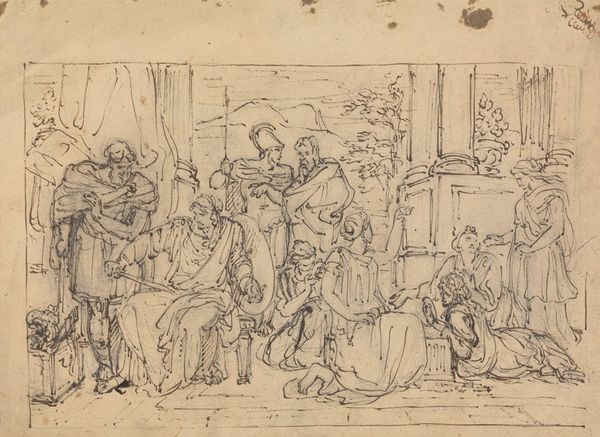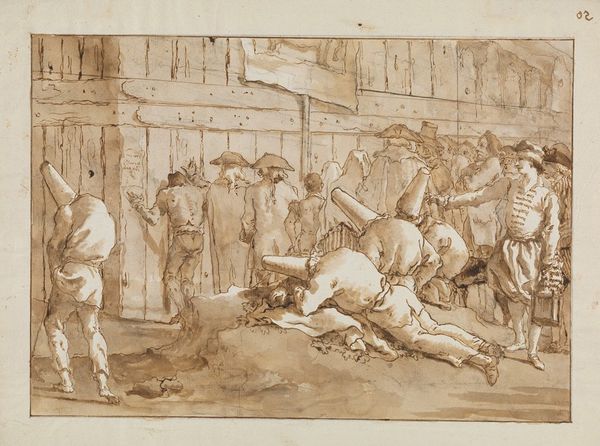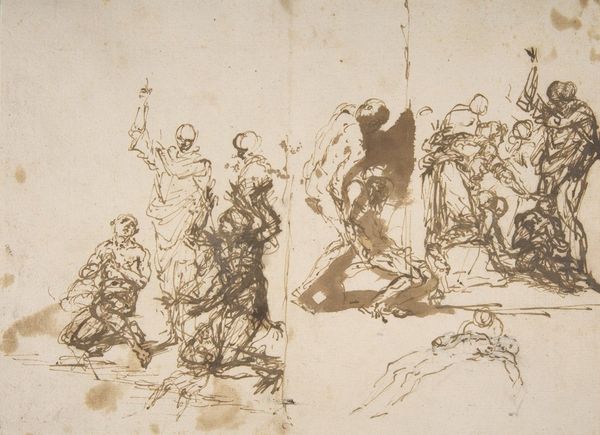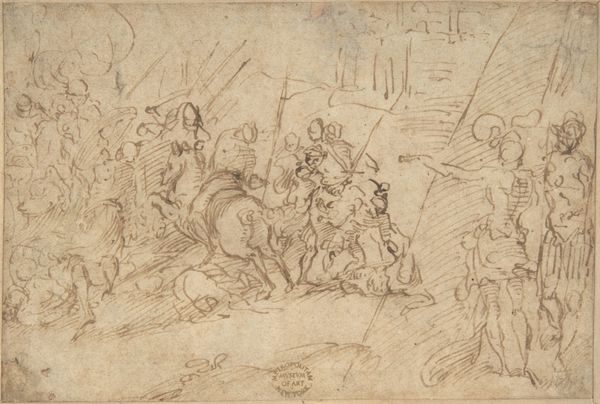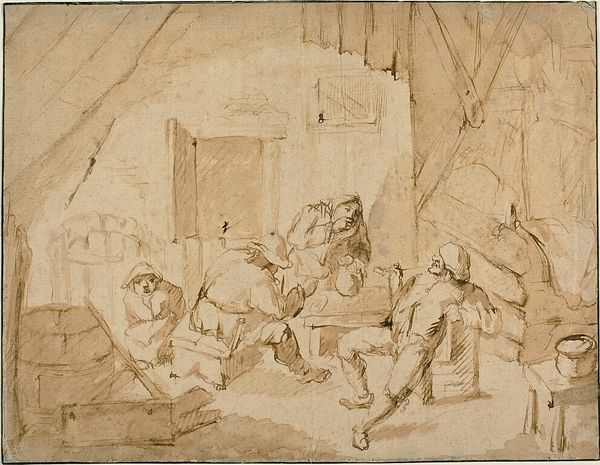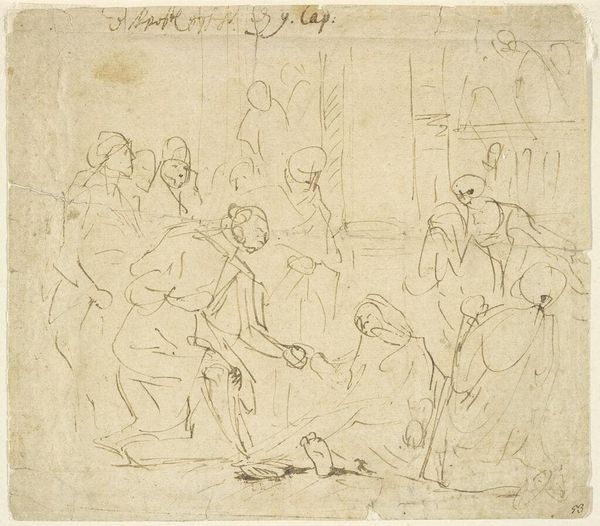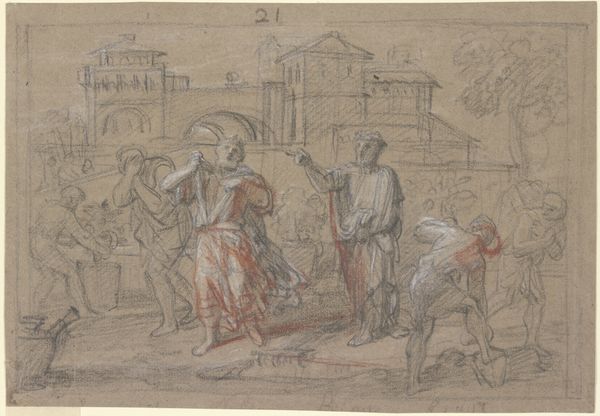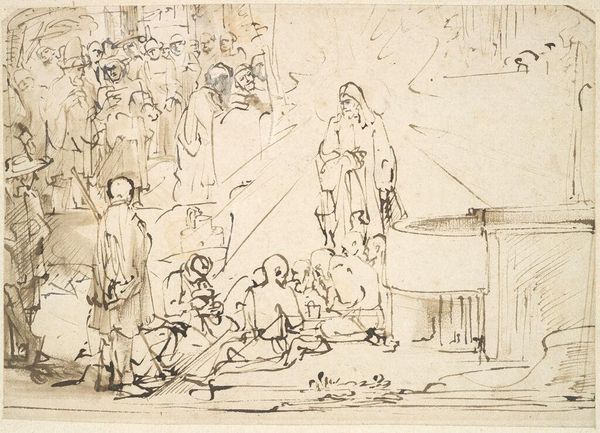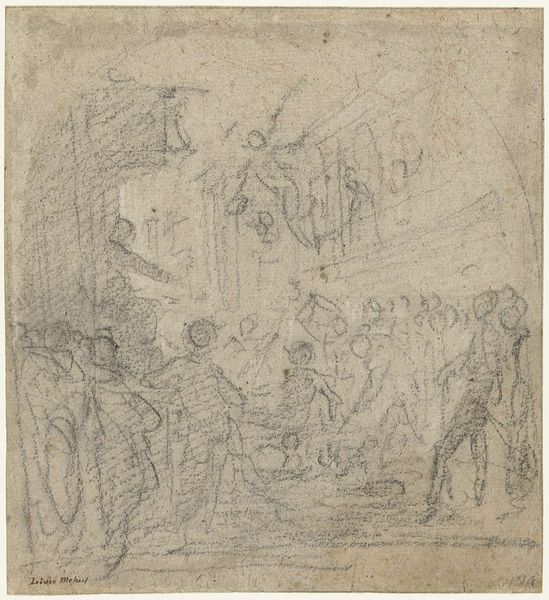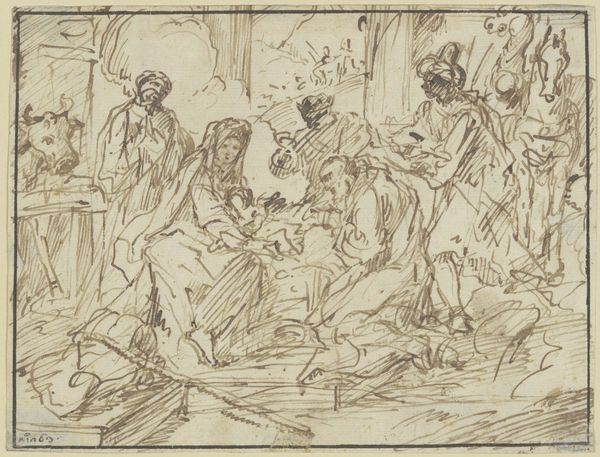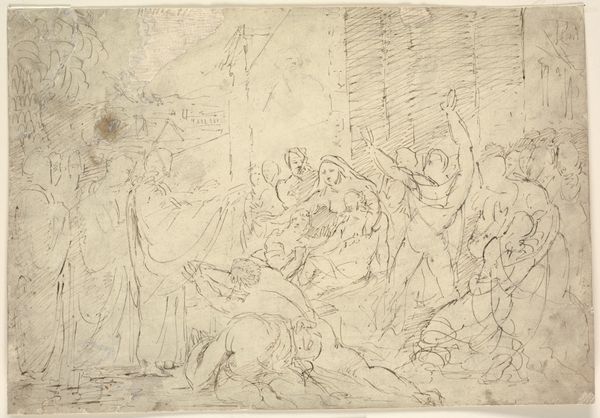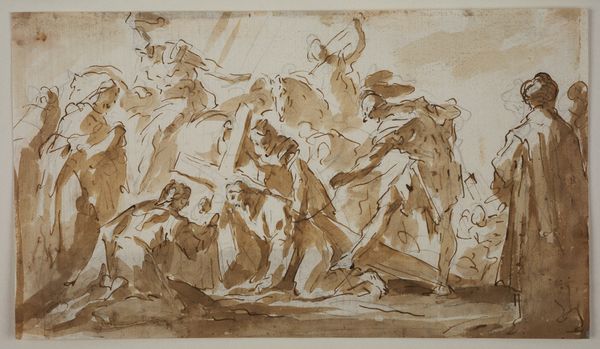
drawing, pen
#
drawing
#
narrative-art
#
baroque
#
figuration
#
pen
#
history-painting
Copyright: Public Domain: Artvee
Editor: Here we have Giovanni Battista Tiepolo's "The Sacrifice of Iphigenia," a pen and wash drawing from around 1726. There's a real rawness to the composition that I find intriguing, particularly in the energy created by the open linework and wash. What stands out to you as you look at the image? Curator: Indeed, the dynamic composition commands immediate attention. The use of line is particularly striking; consider the function of hatching to create shading and model form with these minimal resources. This is critical in the language of baroque art. Notice the central figure; how do the artist's decisions emphasize their emotional and narrative weight through line and spatial composition? Editor: So you're focusing on how Tiepolo has used his technique to build both emotion and storytelling through a complex compositional structure? Curator: Precisely. By engaging the internal structure we discover its expression. Take note of the open space behind the High Priest; observe how it isolates the gesture toward the sacrifice as being separate from those observing from behind. What do you note when you focus on this specific portion? Editor: It feels like it both amplifies the High Priest and yet somehow seems to soften or dilute his decision because we have an escape available. Thanks, that’s given me a lot to think about from a completely new angle. Curator: The formal elements reveal both a rich narrative potential, but the formal execution helps illuminate the cultural narrative represented here in its formal elements. I hope you found this insight insightful as well.
Comments
No comments
Be the first to comment and join the conversation on the ultimate creative platform.

